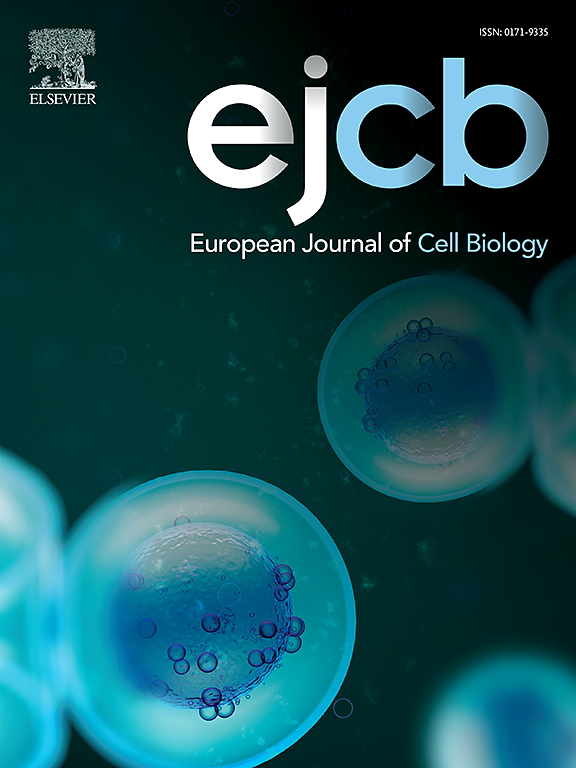microRNA-183–5p induces cell density-dependent apoptosis through the regulation of Presenilin 2
IF 4.3
3区 生物学
Q2 CELL BIOLOGY
引用次数: 0
Abstract
Cells undergo apoptosis under dense culture condition to maintain homeostasis. Impaired apoptosis may contribute to the excessive accumulation of pathogenetic cells in such diseases as cancer and organ fibrosis. Elucidating the molecular mechanisms regulating cell density-dependent apoptosis may provide novel therapeutic strategy against these diseases. We have reported Notch signaling, activated by γ-secretase under dense culture condition, regulates cell density-dependent apoptosis through the induction of IL-6. Presenilin 2 (PSEN2) is a subunit of γ-secretase and has been shown to modulate apoptosis. The role for PSEN2 in cell density-dependent apoptosis and Notch signaling activation, however, remains unclear. Here, we show a crucial role for PSEN2 in the regulation of cell density-dependent apoptosis in NIH 3T3 cells. PSEN2 protein primarily existed as C-terminal fragment (CTF). PSEN2 CTF expression was upregulated as cell density increased. PSEN2 regulated the development of apoptosis, which is accompanied by increased Bcl-2 expression, decreased Bax expression, and activated PI3K/Akt pathway. PSEN2 is predicted to be targeted by microRNA-183–5p (miR-183–5p) by several algorithms. We verified miR-183–5p directly regulates PSEN2 expression and induces apoptosis. In conclusion, our results demonstrate a crucial role of PSEN2 and its regulation by miR-183–5p in the regulation of cell density-dependent apoptosis.
microRNA-183-5p通过调控早老素2诱导细胞密度依赖性凋亡
细胞在密集培养条件下发生凋亡以维持体内平衡。在癌症和器官纤维化等疾病中,受损的细胞凋亡可能导致致病细胞的过度积累。阐明调节细胞密度依赖性凋亡的分子机制可能为这些疾病的治疗提供新的策略。我们报道了Notch信号在密集培养条件下被γ-分泌酶激活,通过诱导IL-6调节细胞密度依赖性凋亡。早老素2 (PSEN2)是γ-分泌酶的一个亚基,已被证明可以调节细胞凋亡。然而,PSEN2在细胞密度依赖性凋亡和Notch信号激活中的作用尚不清楚。在这里,我们展示了PSEN2在NIH 3T3细胞中调控细胞密度依赖性凋亡的关键作用。PSEN2蛋白主要以c端片段(CTF)的形式存在。PSEN2 CTF的表达随着细胞密度的增加而上调。PSEN2调控细胞凋亡的发生,伴随Bcl-2表达升高,Bax表达降低,激活PI3K/Akt通路。通过几种算法预测PSEN2可被microRNA-183-5p (miR-183-5p)靶向。我们证实miR-183-5p直接调控PSEN2的表达并诱导细胞凋亡。总之,我们的研究结果表明PSEN2及其miR-183-5p的调控在细胞密度依赖性凋亡的调控中起着至关重要的作用。
本文章由计算机程序翻译,如有差异,请以英文原文为准。
求助全文
约1分钟内获得全文
求助全文
来源期刊

European journal of cell biology
生物-细胞生物学
CiteScore
7.30
自引率
1.50%
发文量
80
审稿时长
38 days
期刊介绍:
The European Journal of Cell Biology, a journal of experimental cell investigation, publishes reviews, original articles and short communications on the structure, function and macromolecular organization of cells and cell components. Contributions focusing on cellular dynamics, motility and differentiation, particularly if related to cellular biochemistry, molecular biology, immunology, neurobiology, and developmental biology are encouraged. Manuscripts describing significant technical advances are also welcome. In addition, papers dealing with biomedical issues of general interest to cell biologists will be published. Contributions addressing cell biological problems in prokaryotes and plants are also welcome.
 求助内容:
求助内容: 应助结果提醒方式:
应助结果提醒方式:


